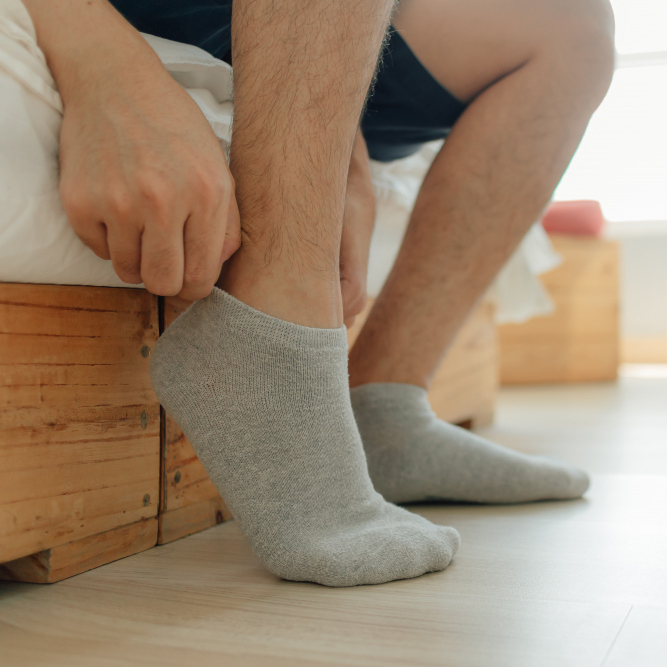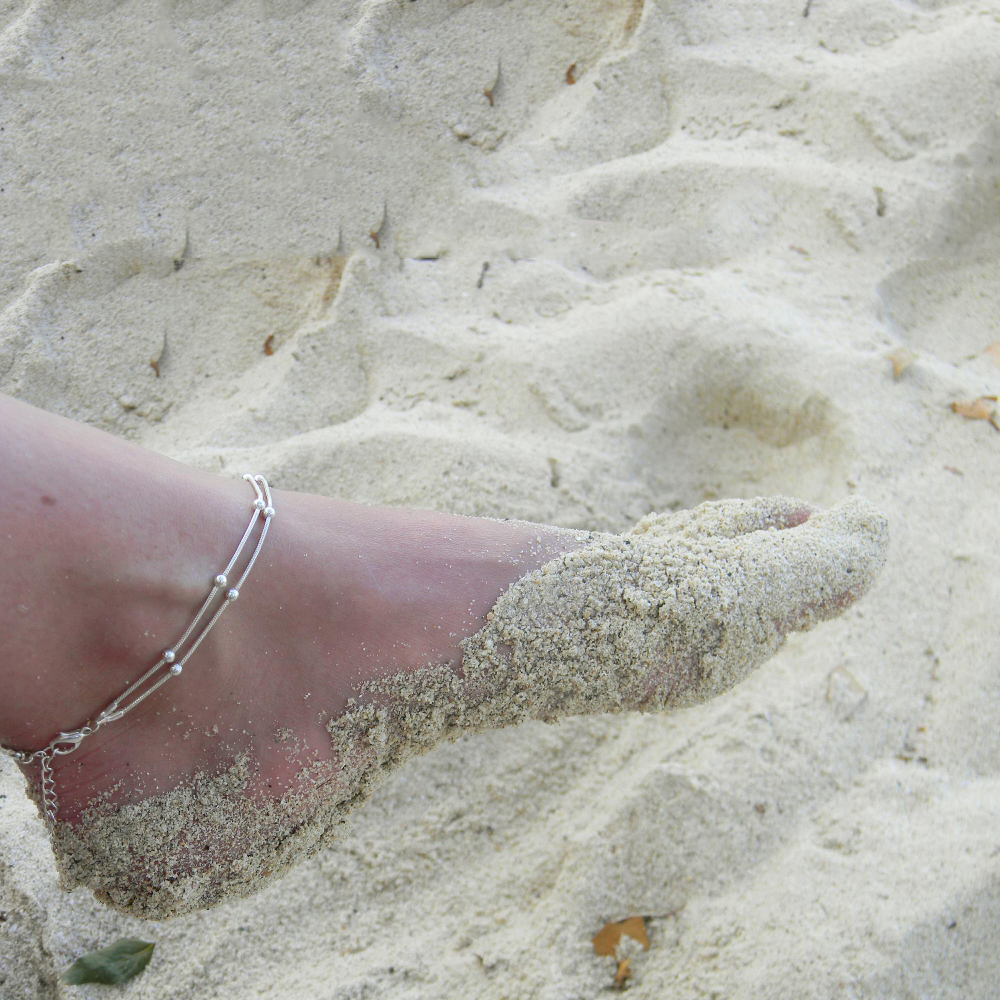Have you ever wondered what happens to your body when you sleep with socks? Many people have different preferences when it comes to bedtime comfort, and wearing socks to bed is a personal choice. However, you may be surprised to learn that sleeping with socks can actually have several effects on your body. In this article, we will explore the surprising benefits and potential drawbacks of sleeping with socks. Whether you’re a fan of cozy feet or curious about the science behind it, read on to discover what happens when you slip on those socks before bedtime.
The Science Behind Sleeping With Socks
There is no conclusive evidence to support the idea that wearing socks to bed can actually improve sleep. However, there is some science to suggest that it might help. It all relates to circulation. The theory is that the warmth created by the socks encourages blood vessels in the feet to open up.
Consequently, this can trigger the mechanisms in your body that signal it’s time to go to sleep. This is because heating your feet expands the blood vessels, a process that automatically cools the body slightly, inducing sleep. There have been a few small studies that have lent weight to this idea. In 2007, the University of Basel found that people who wore socks to bed were more likely to fall asleep than those who went to bed with cold feet.
Likewise, another study from the University of Groningen published in 1999 found that participants who wore socks were able to fall asleep an average of 15 minutes faster than those who went to bed with cold feet. If science and studies are to be believed, wearing socks to bed could be a simple and effective way of improving your sleep quality.
Benefits of Sleeping With Socks
At first, it might seem like wearing socks to sleep is uncomforting, but it actually has many benefits for your sleep quality.
1. Fall asleep faster
To get a good night’s sleep, your body requires a drop in temperature. And wearing socks to bed can help with that. According to a Swiss study, researchers found that participants fell asleep faster when wearing socks to bed than those who didn’t. This is because the feet are one of the poorest regions of blood flow, and wearing socks can help dilate the blood vessels in your feet, which may help transfer heat to the extremities and lower your internal temperature.
2. Better circulation
If you have poor circulation or find yourself feeling cold at night, wearing socks to sleep might be the solution. Since feet are one of the first body parts to feel cold, wearing socks can help keep heat in and regulate your body temperature. By increasing blood flow and widening the blood vessels in your feet, this can help warm your body faster and improve overall circulation.
3. Alleviate Raynaud’s disease
People with Raynaud’s disease often experience their extremities feeling cold and numb, especially in response to cold temperatures and stress. Wearing thermal socks can help keep your feet warm, preventing vasoconstriction from causing more severe symptoms.
Disadvantages of Sleeping With Socks
While some people swear by wearing socks to bed, there are some disadvantages to consider if you have any foot problems or conditions:
- Increased risk of athlete’s foot
Wearing socks for an extended period of time can trap moisture around your feet and create an environment for fungus to grow. For people with athlete’s foot or particularly sweaty feet, this can worsen the condition.
- Skin irritation
If you have sensitive skin or are prone to dryness or eczema, wearing socks while sleeping can cause skin irritation and itchiness.
- Circulation issues
While people with poor circulation can benefit from wearing socks to bed, others might experience circulation problems from it. Wearing tight or thick socks can constrict blood flow and cause swelling, puffiness, and discomfort in the feet and ankles.
Improved Circulation and Sleep Quality
Wearing socks to bed can help you get a better night’s sleep. As the National Sleep Foundation explains, a drop in the body’s internal temperature is an important signal that it’s time to sleep. When you are too cold, your body struggles to reduce its internal temperature, and when you are too hot, your body struggles to reduce your internal temperature. This is where socks come into play. Warm hands and feet help the blood vessels dilate, which helps signal to the brain that it’s time to go to sleep.
When your core temperature is at the correct level, your brain gets the signal to turn down your internal temperature. This causes a loss of heat and helps you drift off to sleep more easily.
Another benefit of wearing socks in bed is that it can increase circulation to the extremities. Good circulation is crucial when trying to heal as it increases the blood flow to wounds, helping white blood cells better navigate the body and do their job efficiently. By wearing socks in bed, you can help ensure that blood flow to the extremities is optimized and promotes healing while you sleep.
However, there are some important details to keep in mind. Wearing dirty socks in bed can introduce pathogens, fungus, and other harmful bacteria into the wound area and can cause infection. If you want to wear socks in bed while you recover from a foot or leg wound, be sure to change them frequently and avoid going to bed with damp or dirty socks.
Regulated Body Temperature
The human body’s core temperature is about 98.6 F. If we get too cold or too hot, our bodies go to great lengths to get our core temperature back where it belongs.
When you sleep, your brain sets your body’s internal thermostat down a few notches. This is because a lower body temperature is thought to help you sleep better.
If the ambient temperature is too cold, your brain will try to warm you up. And if the ambient temperature is too hot, your brain will try to cool you down. Either way, if the ambient temperature doesn’t match your body’s ideal temperature, you may wake up.
So, where do socks come in? Well, if your feet are too cold you’re going to have a hard time getting them warm in bed. And if your feet are freezing, there’s a good chance the rest of your body will feel cold too.
So what happens if you put on a pair of warm socks right before bed? They’ll help warm up your feet so that they can get into bed at the same temperature as the rest of your body. This can help prevent any disruption to your sleep cycle due to being (or getting) cold at night.
Drawbacks of Sleeping With Socks
While there are several benefits of sleeping with socks, it has some side effects as well. People who suffer from diabetes or have peripheral arterial disease (PAD) should avoid sleeping with socks. When you sleep with a pair of socks, you won’t feel it if the socks get too tight and it might result in poor blood circulation.
People with poor blood circulation are at a higher risk of developing peripheral neuropathy, which is a condition that can cause nerve damage. Not to mention, people with hyperhidrosis and athlete’s foot can also suffer from fungal infections if they sleep with socks on. So, if you have diabetes or PAD, or any other serious condition that affects the blood circulation to your feet, make sure to consult your doctor before making it a habit.
Sweaty Feet and Fungal Infections
Feet can sweat from time to time, but if your feet are sweating excessively, you may have a condition called hyperhidrosis. This condition can lead to fungal infections if you aren’t careful. Fungi thrive in warm, dark, damp environments.
When you slip on a pair of socks, especially at nighttime, the socks may cause your feet to sweat more than usual. This excess moisture can make your feet the perfect breeding ground for fungal infections like athlete’s foot. If you know you have hyperhidrosis or just naturally sweaty feet, consider sleeping without socks or placing a small fan by your bed to help prevent excessive sweating while you sleep.
Discomfort and Skin Irritation
There are several ways that wearing socks can cause discomfort and skin irritation, but one of the most common is from the fabric of the sock rubbing against your skin. This is especially true if your feet are prone to sweating since the increased moisture can cause the socks to rub more easily, leading to irritation.
Another way that socks can cause discomfort is if they’re too tight. If your socks cut off your circulation, you may find that you wake up with painful red marks around your ankles, and it may even compromise your body’s natural ability to heal itself overnight.
However, if you can find a pair of socks that are breathable and that fit comfortably, the risks of discomfort and skin irritation go way down. It’s just a matter of finding a product that works for you and your unique needs.
Choosing the Right Socks for Bedtime
For the best comfort and health benefits, consider these sock options:
Socks Made of Natural Fabrics
Cotton, wool, and bamboo are examples of natural materials that can keep your feet warm throughout the night. They also encourage moisture and airflow to wick away, which helps prevent your feet from becoming either too hot or too cold.
Compression Socks
If you’re concerned about the negative effects of poor circulation, ask your doctor about wearing compression socks. They can help improve blood flow and reduce discomfort, particularly if you suffer from such ailments as diabetes, neuropathy, or Raynaud’s disease.
Compression socks are also suitable for those who are inactive, such as individuals bedridden due to a recent surgery or extended hospital stay. However, it’s essential to check with your doctor first, as they may recommend a different treatment plan.
Warm Socks for Winter
While a separate pair of socks is not required for winter, it may be helpful to consider warmer, thicker options if your toes tend to get cold during colder months. Look for woolen socks that provide the warmth and comfort you need, without feeling too stifling.
Socks with Non-Skid Soles
Some individuals enjoy wearing socks with non-skid soles to prevent them from slipping or falling on hardwood or tile floors during the night. These socks are essential if you get up often in the middle of the night due to insomnia, frequent urination, or caring for a child or elderly relative.
Tips for Sleeping With Socks
1. Choose the right materials
As with other bedding, including sheets and pyjamas, the right fabric can impact your body temperature and overall sleep quality. Choose socks made of soft, moisture-wicking materials like cotton, wool, or bamboo-lyocell. These can help keep your feet warm and dry without overheating or causing irritation. Avoid synthetic fabrics and materials that will trap in heat and sweat, as these can disrupt your rest.
2. Keep fit in mind
Socks that are too tight can cut off circulation to your feet, and those that are too loose may not provide the warmth you need. Whether you prefer a full-length sock or an ankle cut, look for a fit that’s comfortable for you.
3. Don’t forget about hygiene
It’s important to start with clean socks every night to avoid skin irritation or infections. Wash your socks regularly and choose a detergent that’s gentle on the skin to keep your feet free of bacteria and fungi.
4. Adjust as needed
Monitor your sleep environment and make adjustments to help you stay comfortable. If you find your feet are getting too warm during the night, you may want to try sleeping in socks with a lower tog rating. In winter, opt for thicker fabric to trap in heat instead.
Personal Preferences and Bedtime Comfort
At the end of the day, the decision to wear socks in bed is a matter of personal preference and bedtime comfort. If you feel warmer and more comfortable wearing them, then it’s likely that your sleep quality will improve. If you feel too hot or confined, then it’s important to feel comfortable enough to take them off. Also, take your bedtime routine into consideration. Do you do yoga before bed? Listen to a meditation podcast? Or do you take a warm bath? Make sure these habits are compatible with if you decide to wear socks in bed. One shouldn’t disrupt the other, so make sure you’re setting yourself up for bedtime success.
In conclusion, sleeping with socks can have both positive and negative effects on your body. It can help regulate body temperature, improve circulation, and promote better sleep. However, it can also lead to sweaty feet, fungal infections, and discomfort for some people. Ultimately, the decision to sleep with socks is a personal one and depends on individual preferences and needs. If you enjoy the sensation of warm feet, give it a try and see how it works for you. Just remember to choose breathable socks and keep your feet clean and dry to avoid any potential issues. Sweet dreams and happy sock-wearing!












